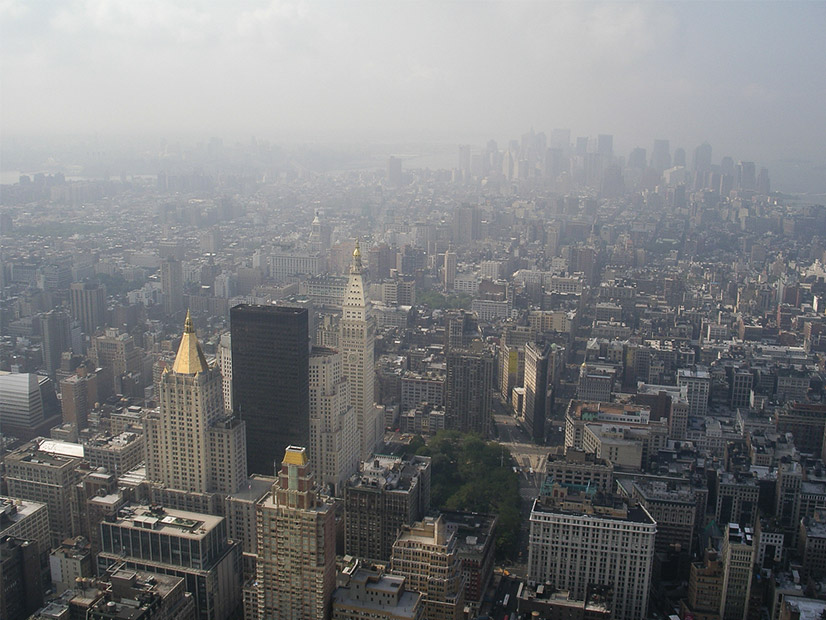
Electric cable projects aimed at bringing renewable energy to New York City would dig through the Hudson River, but opponents say the plan could have potential negative consequences for surrounding communities.
| ShutterstockOpponents of proposed transmission lines that would cut through the Hudson River say Avangrid’s (NYSE: AGR) Excelsior Connect proposal is a better option for reducing New York City’s dependence on fossil fuel-fired generation.
The environmental organization Riverkeeper, which originally supported the long-planned Champlain Hudson Power Express (CHPE), believes that running the line through the Hudson River to access Canadian hydropower will contaminate drinking water.
“Based on what we know now, Avangrid’s proposal is light years better than CHPE,” John Lipscomb, Riverkeeper’s patrol boat captain, told NetZero Insider.
Excelsior also would help build an in-state renewable energy economy instead of making New York rely on power from another country, according to the organization.
CHPE would stretch more than 300 miles through New York state before going under the river to meet electricity needs for New York City.
As New York attempts to cut its GHG emissions, the city’s energy market needs more high-voltage transmission lines to deliver renewable energy to its grid.
Hydroelectric dams in Canada are flooding arboreal forests, a process that emits methane, Lipscomb said.
“All the organic material that’s at the bottom decomposes and creates methane,” he said. “It’s not quite honest to say they are green.”
Riverkeeper withdrew its support for CHPE in 2019.
A Harvard University study found that when land is flooded to create reservoirs, microbes convert naturally occurring mercury in soils into methylmercury, a toxin that bioaccumulates in fish and poisons the food web of nearby Indigenous communities, which rely on the land for food in the remote Canadian wilderness.
CHPE received federal and state permits after it was “rigorously analyzed by regulatory experts during a multi-year process,” including the U.S. Environmental Protection Agency and Army Corps of Engineers, Jennifer Laird-White, vice president of external affairs for the company behind CHPE’s infrastructure, Transmission Developers Inc. (TDI), said in a statement to NetZero Insider.
Excelsior and CHPE are among a group of seven projects that were submitted in response to New York State Energy Research & Development Authority’s (NYSERDA) Clean Energy Standard Tier 4 request for proposals (RFP). Tier 4 projects must demonstrate that they can increase the penetration of renewable energy into New York City.
Excelsior would deliver 1,200 MW of wind and solar energy generated in upstate New York via an underground HVDC line to Queens.
Another project bid into the Tier 4 RFP, the Catskills Renewable Connector, also would run under the Hudson River.
The river is used as a drinking water source for seven communities in the mid-Hudson region. Those communities, which have termed themselves the “Hudson 7,” worry that pollutants could be churned up during construction.
CHPE’s cable would be laid along 200 miles in Lake Champlain and the Hudson River with a machine that uses high-powered water jets to blast away sediment to create a seven-foot-deep trench.
That process, according to Riverkeeper, could churn up legacy contaminants such as polychlorinated biphenyl, which were once used as dielectric and coolant fluids in machines and dumped into the Hudson by General Electric.
Riverkeeper also says that the electromagnetic fields generated by the cables could interfere with the ability of the endangered Atlantic sturgeon to navigate and forage in the water.
However, a document from NOAA Fisheries sent to TDI in March said that “based on the analysis that all effects of the proposed project will be insignificant or discountable, we concur with your determination that the CHPE project is not likely to adversely affect any Endangered Species Act-listed species or critical habitat.”
NYSERDA expects to award the Tier 4 renewable energy certificate contracts by the end of September for up to an aggregate 1,500 MW, but the authority also said it could exceed that total.

